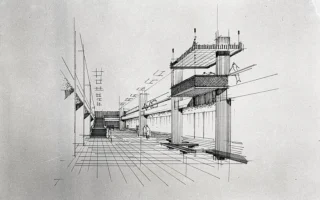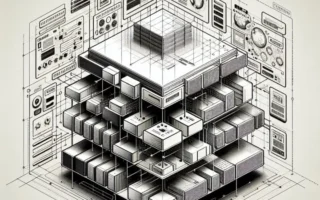Introduction: Unveiling the Concept of Typology
In the realm of architecture, typology stands as a fundamental concept that shapes the design, function, and identity of built environments. Rooted in the study of architectural forms, typology encompasses the classification and analysis of buildings based on their shared characteristics, functions, and cultural contexts. In this comprehensive exploration, we delve into the essence of typology in architecture, unraveling its significance and application in the creation of meaningful and responsive built environments.
Understanding Typology
Typology in architecture refers to the classification and categorization of buildings based on common attributes such as form, function, program, and spatial organization. It involves the study of recurring patterns, prototypes, and archetypes found within the built environment, allowing architects to understand and interpret architectural precedents and traditions.
The Core Elements of Typology
Typology encompasses several key elements that contribute to its definition and application within the field of architecture.
1: Form and Morphology – Shapes of Expression
Form and morphology refer to the physical characteristics and spatial configurations of buildings within a typological framework. This includes elements such as building massing, proportions, scale, and spatial organization. By analyzing the form and morphology of buildings, architects can identify common patterns and typological archetypes that inform the design process.
2: Function and Program – Purposeful Design
Function and program pertain to the intended use and activities supported by buildings within a typological context. This includes considerations such as building function, occupancy type, and spatial requirements. By understanding the functional requirements of different building types, architects can tailor their designs to meet the needs of users and stakeholders while adhering to typological conventions and standards.
3: Context and Culture – Influence of Place
Context and culture play a significant role in shaping typological conventions and traditions within different architectural contexts. This includes factors such as climate, geography, history, and social customs. By studying the cultural and contextual factors that influence architectural expression, architects can create designs that resonate with local identity and heritage while responding to contemporary needs and aspirations.
4: Tectonics and Construction – Material Realization
Tectonics and construction refer to the technical and material aspects of architectural design within a typological framework. This includes considerations such as construction techniques, materials, and structural systems. By examining the tectonic expression and materiality of buildings, architects can identify typological patterns and precedents that inform their design decisions and construction methods.
The Role of Typology in Architectural Design
Typology serves as a valuable tool for architects in the design process, providing a framework for understanding, analyzing, and interpreting architectural forms and functions.
1: Design Inspiration – Drawing from Tradition
Typology provides architects with a rich source of design inspiration and precedent, allowing them to draw from established typological conventions and traditions. By studying historical and cultural precedents, architects can develop innovative design solutions that respond to contemporary challenges while honoring the legacy of architectural heritage.
2: Design Adaptation – Tailoring Solutions
Typology enables architects to adapt and customize design solutions to meet the specific needs and constraints of a project. By understanding the typological characteristics and requirements of different building types, architects can tailor their designs to optimize functionality, efficiency, and user experience while maintaining architectural coherence and integrity.
3: Design Innovation – Pushing Boundaries
Typology also serves as a catalyst for design innovation and experimentation within the field of architecture. By challenging typological conventions and exploring new possibilities, architects can push the boundaries of architectural expression and redefine traditional building types. This creative exploration fosters innovation, diversity, and evolution within the built environment.
Conclusion: Embracing Typology as a Design Tool
In conclusion, typology is a fundamental concept in architecture that shapes the design, function, and identity of built environments. By understanding the typological characteristics and conventions of different building types, architects can develop meaningful and responsive design solutions that resonate with users and stakeholders. As architecture continues to evolve and respond to changing societal needs and aspirations, typology will remain a valuable tool for architects in the creation of innovative and sustainable built environments.




